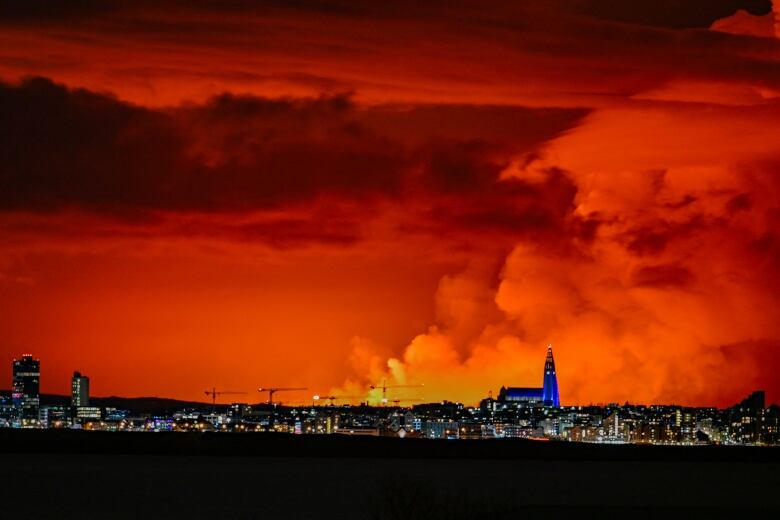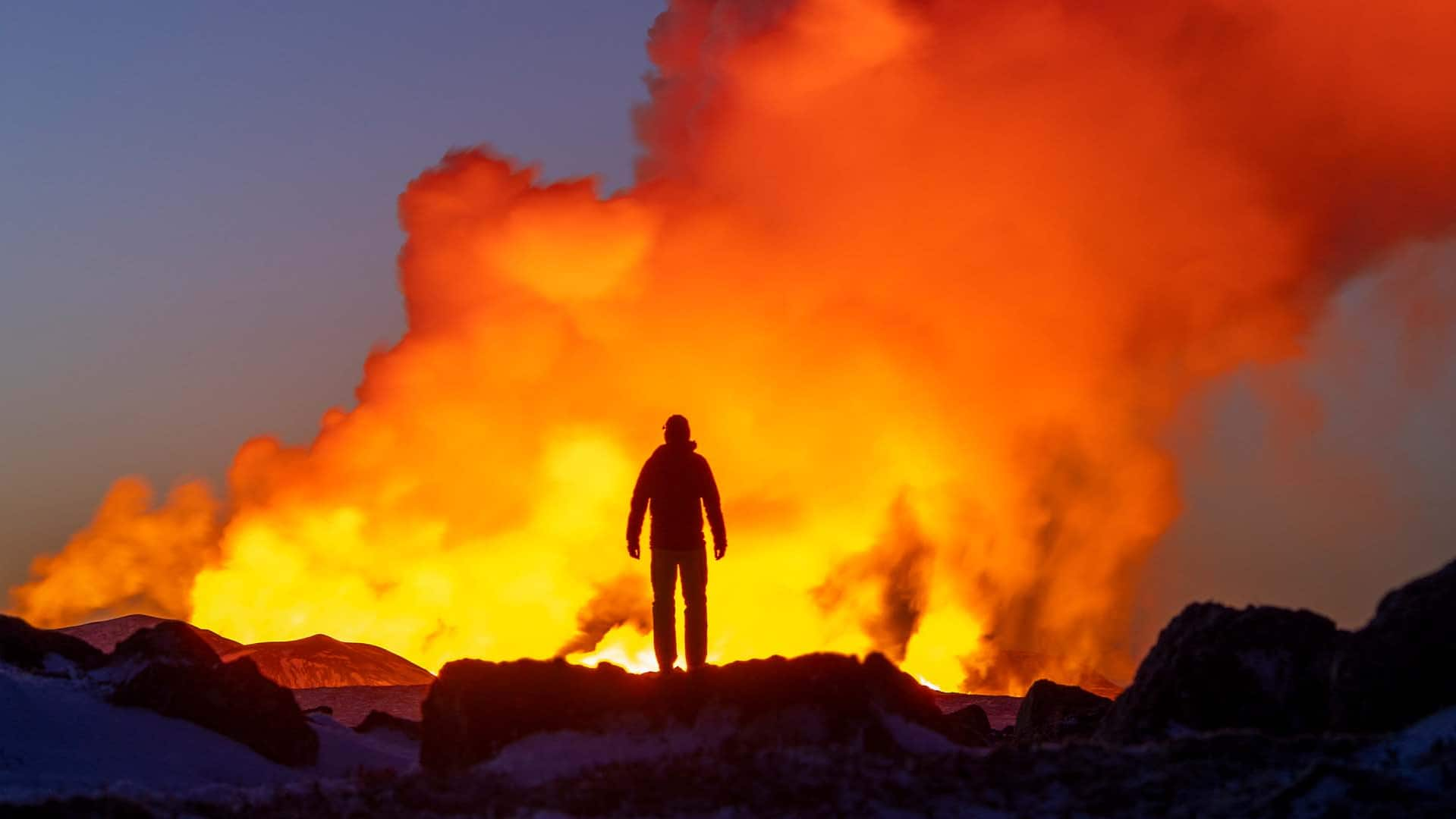
A volcano in Iceland erupted for the fourth time since December on Saturday, the country’s meteorological office said, spewing smoke and bright orange lava into the air in sharp contrast against the dark night sky.
Livestreams from the area showed fountains of molten rock soaring from fissures in the ground after authorities had warned for weeks that an eruption was imminent on the Reykjanes peninsula, just south of Iceland’s capital, Reykjavik.
“Warning: An eruption began in Reykjanes,” the Icelandic Meteorological Office said on its website. The website for Reykjavik’s Keflavik Airport showed it remained open both for departures and arrivals.
The nearby fishing town of Grindavik, where a few of the nearly 4,000 residents had returned following earlier eruptions, was again being evacuated, public broadcaster RUV reported. An outbreak in January burned to the ground several of its homes.
Icelandic police said they had declared a state of emergency for the area and the Civil Defence authority dispatched a helicopter to survey the extent of the eruption.

The nearby Blue Lagoon luxury geothermal spa immediately shut its doors, as it did during previous eruptions.
“We have evacuated and temporarily closed all our operational units,” the operator said on its website. “We will remain closed through Sunday, March 17. Further updates and information will be provided here as they become available.”
Iceland boasts more than 30 active volcanoes, making the small, nordic island a prime destination for volcano tourism — a niche segment that attracts thousands of thrill seekers.
The site of the eruption was between Hagafell and Stora-Skogfell, the same area as the previous outbreak on Feb. 8, the Met Office said.
Canadian photographer Paul Zizka shares the ‘surreal’ images he took of the volcanic eruption in Grindavik, Iceland, on Feb. 8.
In 2010, ash clouds from eruptions at the Eyafjallajokull volcano in the south of Iceland spread over large parts of Europe, grounding some 100,000 flights and forcing hundreds of Icelanders to evacuate their homes.
Volcanic outbreaks in the Reykjanes peninsula are so-called fissure eruptions, which do not usually cause large explosions or significant dispersal of ash into the stratosphere.
However, scientists fear they could continue for decades, and Icelandic authorities have started building dykes to divert burning lava flows away from homes and critical infrastructure.
The February eruption cut off district heating to more than 20,000 people as lava flows destroyed roads and pipelines.
Iceland’s seismic and volcanic activity is due to its location between the Eurasian and the North American tectonic plates, among the largest on the planet, which move in opposite directions.


